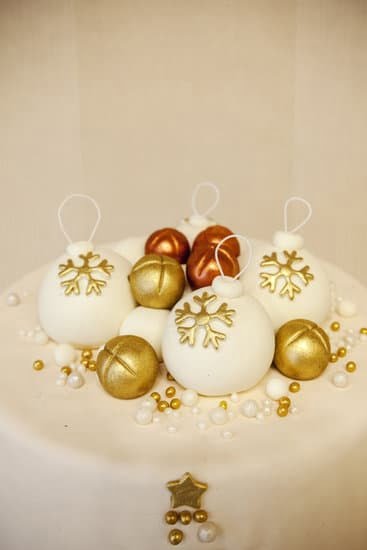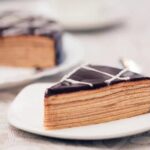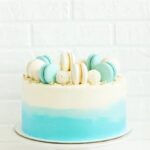Looking to learn how to make frosting to decorate cakes? Frosting plays a crucial role in both the flavor and presentation of a cake. It not only adds sweetness but also serves as a canvas for creative designs and decorations. Different types of frosting can completely transform the look and taste of a cake, making it a key element in cake decorating.
When it comes to cake decorating, the type of frosting used can have a significant impact on the final result. From classic buttercream to versatile fondant, each type offers unique characteristics that can elevate the overall aesthetic of a cake. Understanding how to make and work with different frostings is essential for anyone looking to venture into the world of cake decorating.
In this article, we will explore the various types of frosting commonly used in cake decorating, including buttercream, cream cheese, fondant, and royal icing. Additionally, we will discuss basic ingredients for homemade frosting and provide step-by-step instructions for making and working with different frostings. Whether you’re a novice baker or an experienced cake decorator, mastering the art of frosting is essential for bringing your cake decorating vision to life.
Types of Frosting for Cake Decorating
When it comes to decorating cakes, the type of frosting used can make a big difference in the final result. Each type of frosting has its own unique texture, flavor, and versatility, allowing for a wide range of decorative options. Here are some of the most popular types of frosting used in cake decorating:
- Buttercream Frosting: This classic choice is known for its smooth and creamy texture, making it easy to work with for creating various designs and decorations. It can also be flavored and colored in many ways, adding both visual appeal and delicious taste to any cake.
- Cream Cheese Frosting: Tangy and rich in flavor, cream cheese frosting is a popular choice for pairing with red velvet cakes. Its creamy consistency makes it perfect for piping intricate designs or simply spreading over a cake for a luscious finish.
- Fondant: This versatile and moldable frosting is popular for creating intricate designs and 3D decorations. It can be rolled out to cover cakes smoothly, providing a clean canvas for more elaborate decorations.
- Royal Icing: Ideal for intricate piping and delicate decorations, royal icing hardens as it dries, making it perfect for creating detailed patterns on cakes and cookies.
Knowing how to make frosting to decorate cakes opens up a world of creative possibilities in cake decorating. Each type of frosting offers its own unique benefits and challenges, allowing bakers to experiment with different techniques and designs to elevate their cake decorating skills. Whether you’re looking to create classic smooth finishes or intricate piped designs, choosing the right type of frosting is key to bringing your cake decorating vision to life.
Basic Ingredients for Homemade Frosting
When it comes to decorating cakes, the right frosting can make all the difference. Whether you’re aiming for a smooth and creamy buttercream, a tangy and rich cream cheese frosting, or a versatile and moldable fondant, having the right ingredients is key to achieving the perfect texture and flavor for your homemade frosting.
Sugar
Different types of sugar can be used to achieve different results in frosting. For example, granulated sugar is commonly used in buttercream frosting for its ability to dissolve easily, while confectioners’ sugar is favored for its fine texture and smooth consistency when making royal icing. Understanding the role of sugar in your chosen frosting recipe is crucial to achieving the desired taste and texture.
Butter
Unsalted butter is typically preferred when making homemade frosting as it allows for better control over the salt content in the final product. Additionally, unsalted butter tends to have a richer flavor compared to salted butter, which can enhance the overall taste of the frosting.
Flavorings
Vanilla extract is a staple flavoring in many frosting recipes, adding a sweet and aromatic touch to the final product. However, there are numerous other flavor options to consider, such as almond extract, lemon zest, or even espresso powder for a unique twist. Experimenting with different flavorings can help elevate your homemade frosting and create new and exciting flavor profiles that harmonize with your cake creations.
By understanding how these basic ingredients work together, you can master the art of creating delicious and visually stunning frostings to decorate your cakes. Whether you prefer the classic simplicity of buttercream or are ready to experiment with more intricate designs using fondant or royal icing, mastering these foundational ingredients will set you on the path to becoming a skilled cake decorator.
Making Buttercream Frosting From Scratch
Buttercream frosting is a classic choice for decorating cakes, known for its smooth and creamy texture. Making your own buttercream frosting from scratch allows you to customize the flavor and consistency to perfectly complement your cake. In this section, we will provide step-by-step instructions on how to make buttercream frosting at home, along with tips for achieving the perfect consistency and flavor.
Step-by-Step Instructions
To make a simple buttercream frosting, you will need unsalted butter, powdered sugar, vanilla extract, and a pinch of salt. Start by beating the butter in a mixing bowl until it becomes light and fluffy. Gradually add the powdered sugar while continuing to beat the mixture. Once the powdered sugar is fully incorporated, add a splash of vanilla extract and a pinch of salt to enhance the flavor.
Tips for Consistency and Flavor
Achieving the perfect consistency for your buttercream frosting is crucial for cake decorating. If the frosting is too thick, you can add a small amount of milk or cream to thin it out. On the other hand, if it is too thin, you can gradually add more powdered sugar until you reach the desired texture. Additionally, experiment with different flavor variations by incorporating almond extract or other flavorings to create unique frostings that will elevate your cakes.
Flavor Variations and Coloring Options
One of the benefits of making your own buttercream frosting is the ability to tailor it to your preferences. You can experiment with different flavor variations by adding citrus zest or flavored extracts such as mint or coconut.
When it comes to coloring options, gel food coloring is ideal for achieving vibrant shades without altering the consistency of the frosting. By mastering these techniques for making buttercream frosting from scratch, you can take your cake decorating skills to new heights and bring your creative visions to life.
Creating Cream Cheese Frosting
Cream cheese frosting is a popular choice for many cake decorators due to its tangy flavor and smooth, creamy texture. It’s an ideal option for pairing with red velvet cakes, carrot cakes, and even as a filling for cupcakes. Here is a simple recipe for creating cream cheese frosting from scratch:
Ingredients
- 1 package (8 ounces) cream cheese, softened
- 1/2 cup unsalted butter, softened
- 4 cups confectioners’ sugar
- 1 teaspoon vanilla extract
Instructions
- In a large bowl, beat the softened cream cheese and butter together until smooth.
- Add the confectioners’ sugar one cup at a time, mixing well after each addition.
- Stir in the vanilla extract until fully incorporated and the frosting is smooth and creamy.
When working with cream cheese frosting, it’s important to keep in mind that it does not hold up as well in warm temperatures compared to buttercream frosting. It should be stored in the refrigerator if not being used immediately. When incorporating cream cheese into your frosting recipe, ensure that both the cream cheese and butter are thoroughly softened before mixing them together to avoid lumps or uneven texture.
Cream cheese frosting can also be flavored with other extracts such as almond or lemon for added versatility. Experimenting with different flavor combinations can add an extra dimension to your cake decorating creations. Whether you’re piping intricate designs or simply spreading it onto a cake, cream cheese frosting adds an indulgent touch to any dessert.
Working With Fondant
Fondant is a versatile and popular frosting for cake decorating, known for its smooth, pliable texture and ability to create intricate designs. Many bakers and cake decorators love using fondant for its clean, polished look and the endless possibilities it offers for creativity. When it comes to working with fondant, there are a few key techniques to keep in mind.
Rolling out and covering a cake with fondant requires patience and precision. It’s essential to have a smooth surface on which to roll out the fondant, so using a non-stick mat or powdered sugar can help prevent sticking. Once rolled out to the desired thickness, carefully drape the fondant over the cake and gently smooth it out from the center to remove any air bubbles or wrinkles.
In addition to covering cakes, fondant can also be used to create 3D decorations and figurines. From flowers and bows to animals and characters, fondant allows decorators to bring their imaginative designs to life on top of cakes or as standalone edible decorations. However, working with fondant also comes with common troubleshooting tips such as preventing drying out or tearing while working with it.
| Techniques | Tips |
|---|---|
| Rolling Out Fondant | Use a non-stick mat or powdered sugar for a smooth surface |
| Creating Decorations | Allow time for decorations to set before placing them on cakes |
| Troubleshooting | Mist with water if fondant starts drying out while working with it |
Using Royal Icing for Intricate Designs
Royal icing is a versatile and essential frosting for creating intricate designs on cakes and cookies. It is made from powdered sugar, egg whites, and flavorings such as lemon juice or almond extract. The key to working with royal icing lies in achieving the ideal consistency for piping and flooding. When done correctly, royal icing can be used to create delicate lace patterns, stunning flowers, and other intricate details that elevate the overall appearance of a dessert.
To make royal icing, you will need confectioners’ sugar (powdered sugar), meringue powder or egg whites, and flavorings. The proportion of sugar to meringue powder or egg whites is crucial in determining the consistency of the royal icing. A thicker consistency is ideal for outlining designs and creating dimension, while a slightly thinner consistency works well for flooding areas with color.
One common challenge when working with royal icing is achieving the right consistency. If the icing is too thick, it may be difficult to pipe intricate designs, while overly thin icing may not hold its shape when piped onto the cake or cookie. Adding small amounts of water or powdered sugar can help adjust the consistency as needed.
Relevant and Useful Data
| Ingredient | Ideal Proportion |
|---|---|
| Confectioners’ Sugar | 4 cups |
| Meringue Powder/Egg Whites | 3 tablespoons |
| Water/Powdered Sugar | To Adjust Consistency |
Tips for Decorating With Frosting
Decorating with frosting is a crucial step in the cake decorating process. It allows bakers to unleash their creativity and turn a simple cake into a work of art. Whether it’s creating intricate designs, piping delicate flowers, or smoothly covering the entire cake, frosting plays a key role in bringing the vision of the cake decorator to life.
One important aspect of decorating with frosting is understanding different techniques for applying it to a cake. For example, for smooth and sleek finishes, bakers can use an offset spatula to spread the frosting evenly across the cake’s surface. In contrast, if they want to create textured designs or add dimension to their cakes, using a piping bag with different nozzles for various shapes can be an effective technique.
Having the right tools and equipment is essential when it comes to decorating with frosting. Piping bags, nozzles, offset spatulas, and bench scrapers are just some of the tools that can help achieve professional-looking decorations. These tools not only make the decorating process more efficient but also ensure that the final result meets the high standards of professional cake decorators.
Finally, troubleshooting common issues that may arise during the decorating process is crucial for achieving a polished final product. Whether it’s dealing with air bubbles in royal icing or handling fondant that’s too sticky or dry, having knowledge of common problems and their solutions can save time and frustration. By mastering these tips for decorating with frosting, bakers can bring their creative visions to life and produce stunning cakes that impress both visually and in flavor.
Conclusion
In conclusion, mastering the art of frosting is essential for bringing your cake decorating vision to life. Whether you prefer the classic smoothness of buttercream, the tangy richness of cream cheese, the versatility of fondant, or the delicacy of royal icing, understanding the different types of frosting and their uses is crucial for creating stunning cakes. By experimenting with different frosting techniques and designs, you can elevate your cake decorating skills and turn your vision into a reality.
Now that you have a basic understanding of how to make frosting to decorate cakes, it’s time to put your knowledge into practice. Armed with the right ingredients and techniques, you have the power to create beautiful and delicious works of art.
Don’t be afraid to explore flavor variations, coloring options, and different decorative elements to add a personal touch to your creations. Whether you’re a beginner or an experienced baker, there’s always something new to learn and discover in the world of cake decorating.
In the end, cake decorating is not just about making a dessert look good; it’s about expressing creativity and passion through food. With patience, practice, and a good understanding of frosting techniques, you can take your cake decorating skills to new heights. So go ahead and unleash your creativity in the kitchen as you experiment with different types of frosting to turn ordinary cakes into extraordinary masterpieces.
Frequently Asked Questions
What Kind of Frosting Do You Use to Decorate a Cake?
The most common type of frosting used to decorate cakes is buttercream frosting. It’s smooth, creamy, and holds its shape well, making it perfect for piping designs and borders.
How Do You Make Frosting Better for Decorating?
To make frosting better for decorating, you can add additional powdered sugar to stiffen the consistency and make it easier to create detailed designs. You can also chill the frosting briefly to help it hold its shape.
What Frosting Do Professionals Use for Cakes?
Professionals often use Swiss meringue buttercream or Italian meringue buttercream for decorating cakes. These frostings are known for their silky smooth texture and stability, making them ideal for intricate designs and wedding cakes.

Welcome to our cake decorating blog! My name is Destiny Flores, and I am the proud owner of a cake decorating business named Cake Karma. Our mission is to provide delicious, beautiful cakes for all occasions. We specialize in creating custom cakes that are tailored specifically to each customer’s individual needs and tastes.





